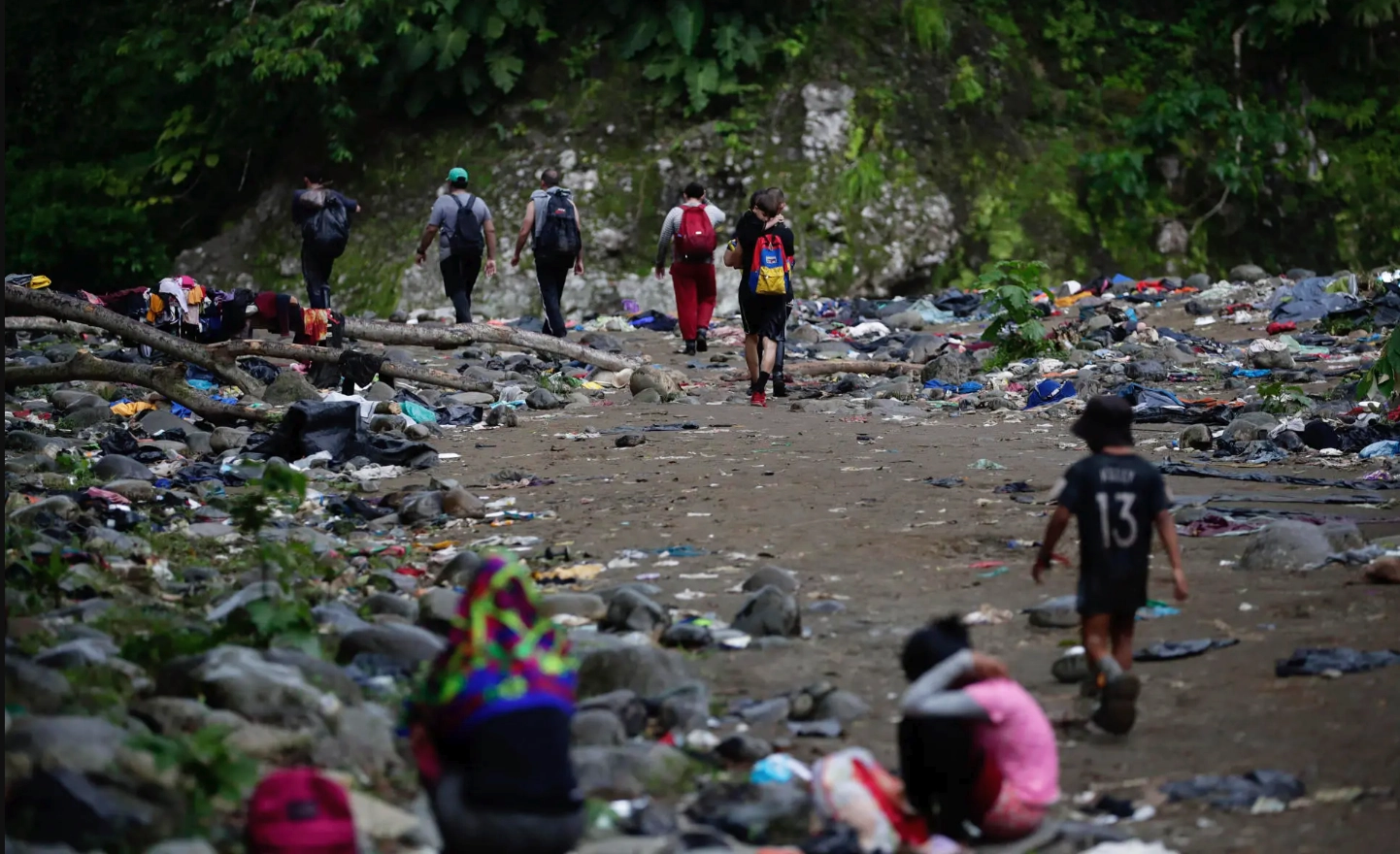Michael Yon, a renowned war correspondent, traveled in September 2023 to the Province of Darien, in the Republic of Panama, to explain to the world the reality of migration through the jungle characteristic of the so-called Darien Gap. Yon reports two facts that caught his attention: the increase in migrants from countries as far away as Afghanistan, Nepal, China and multiple countries in Africa, and the environmental devastation that the environment is suffering in the Darien region due to pollution and destruction caused by people on their way to North America.
Migration from Asia and Africa to North America
According to the International Organization for Migration, in 2020 some 17.5 million people migrated from Asia to North America, the equivalent of the entire population of the city of Los Angeles. In parallel, the Migration Policy Institute states that migration from Africa to North America is on the rise and that in 2019 alone, 5,000 apprehensions were reported at U.S. borders of people from 35 nationalities, mainly Cameroon, Democratic Republic of Congo, Eritrea, Ghana, and Somalia.
In May 2023, the UN reported a significant increase in migrants through the Darien. The same document details a significant increase in migrants with nationalities from countries such as Haiti, Nepal, Afghanistan, Bangladesh, China, and others from the African continent. Coincidentally, the first four countries mentioned are among the most directly and indirectly affected by climate change according to the Global Climate Risk Index 2021.
Climate change and migration
The consequences of climate change, such as droughts, river floods and storms, are becoming increasingly frequent in the above-mentioned countries. These natural disasters force citizens to see migration as a solution. To that end, they choose the Latin American route that starts in South American countries such as Brazil, Ecuador or Venezuela, passes through the Darien and continues through Central America to reach the United States of America.
There are countless testimonies of tragedy, sadness, and death of those who have already passed through this route searching for better days for themselves and their families. But the impact is not only on the mental and physical health of the people. The large number of migrants who use the Darien route are causing great pollution and environmental damage that, if they continue at the current rate, in the short term, could be considered irreversible environmental impacts.
Darien National Park: more than just a protected area
Darien National Park was created by the Panamanian government in 1980 and immediately after, in 1981, UNESCO declared it part of the Biosphere Reserve of Humanity, the largest protected area in Central America and the Caribbean. With flora, fauna, and environmental conditions unique in the world, it is also home to ancestral indigenous communities that struggle to maintain their cultural identity and depend on these territories for their livelihoods.
Before the Darien was established as a migratory route, this ecosystem was already facing serious human threats. Actions such as logging, arson, illegal mining, fraudulent land titling, monocultures and intensive agricultural activities have put the Darien at risk. And the current migration by this route is considerably worsening the environmental reality of this unprotected but environmentally and culturally important region of Panama.
Environmental problems caused by migration
Pollution caused by solid waste — estimated by the Panamanian Ministry of Environment at 9 kilos per person — abandoned along the road, which includes at least 37 streams and 20 rivers in the Darien National Park, is one of the main problems caused by the migratory route. The Presidency of the Republic of Panama announced in August 2023 that an estimated 9,000 tons of garbage is scattered along the routes used by migrants in and around the park. This reality has created a national emergency in Panama that has not been properly addressed due to the lack of resources and technical capacity of public institutions in the region.
A second problem, but no less important, is the erosion caused by the passage of migrants. In 2023, more than half a million people crossed the Darien, who added to those of previous years, would be responsible for the removal of no less than 391,803 cubic meters of soil, which would be equivalent to 6,530 marine cargo containers 12 meters long. Erosion at such levels affects ecosystem productivity and causes significant losses to the biological diversity of the area.
Although at present a significant part of migration is due to political reasons in the countries of origin, it is already recognized that migration from Asia and Africa is on the rise, and one of the main reasons is the impact of climate change. While no country is exempt from suffering its consequences, we must add in countries like Panama the collateral environmental damage that forced migration is causing in areas of global environmental importance such as the Darien rainforest.
It is urgent to redouble international efforts to find ways to combat climate change in the medium and long term, as well as to address in the short term the needs of populations in their places of origin in the face of direct or indirect risks related to climate change. The people affected, mostly from the global South, who seek hope in countries located in North America or Europe, on their way, can cause other environmental problems in vital conservation areas and of importance in the simultaneous fight against climate change.
*Translated by Janaína Ruviaro da Silva from the original in Spanish.













